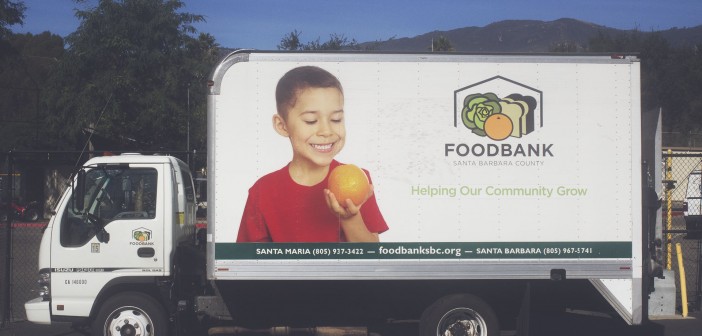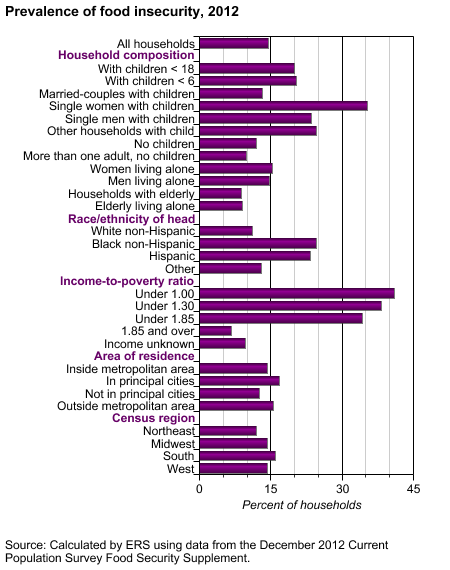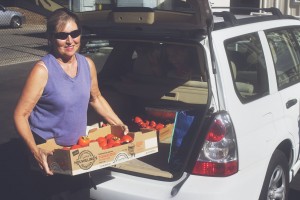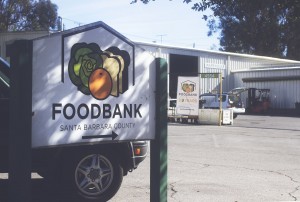“Our Food Bank now serves an incredible one out of four people in Santa Barbara County”, these were Erik Talkin’s words, CEO of the Santa Barbara County Food Bank, that still resonate in my head. One out of four people in Santa Barbara County rely on daily, weekly, or monthly food support and deliveries in order to make it through and provide enough food to nourish their families. And the more I thought about it, the more it hit me. If one out of four people depend on help for food in Santa Barbara County, what would be the nationwide statistic on hunger, on food illiteracy, and people who depend on food and meal deliveries. I went on a journey to not only dig deeper into the issue in Santa Barbara, but also took a better look at the situation in other parts of the country.
When it comes to hunger and food insecurity, people most often reflect that idea on other, poorer parts of the world, often blending out that it is happening right outside American people’s doorsteps. The most recent statistics found than in the United States, over 49 millions people live in food insecure households, and out of the 49 millions, over a third are children under the age of 18. Unfortunately, food insecurity is not only confined on these statistics, but often it involves racial minority households, as well as single parent households with at least one child.
To understand the problem of food insecurity better, it is important to understand that many people do not have access to affordable, healthy, and sufficient food. These so-called food deserts are found all over the country, most often in urban neighborhoods or rural areas, where the lack of healthy food options caused numerous health issues and diseases. According to the United States Department of Agriculture, food deserts often hit low-income and low-access communities, where people do not have the money or the access to buy food at a supermarket. The Department’s Economic Research Service estimates the number of people living in a food desert to hit 23.5 million, with over 13.5 million people living below or around the poverty line.
After getting these numbers, I asked myself: Why does Santa Barbara have such a high number of people living in food insecure households? According to Erik Talkin, a “shocking 100,000 people out of a population of approximately 400,000 are served by the Food Bank”, although grocery stores are found all around the county. With the help of the USDA Food Desert tracker, I was able to look up Santa Barbara County, and found that most parts of the Sierra Madre Mountain range fell under an active food desert. There might be other reasons why Santa Barbara County has such a high percentage of food insecure households, which I will go into later in this article.
For now, let’s cover another part of the low food security households. The USDA produces and publishes a yearly report on national food insecurity, a report that helps to further understand the problem. In very high food insecurity households, over 97 percent of the people responded that they were either afraid that food would run out, or were worried that the food they bought with the monthly money they had would not last all month. For many of these households, adults reported that they had to cut meal sizes or skip a meal in order to have and provide enough food for the rest of the family. In California, 15 percent of all households had low or very low food security; many of these households were minorities, large families, poor families, or single parent homes. In comparison to California, Arkansas has over 21 % of all households living in food insecurity, a sad national record.
These numbers show that there is no sweet-talking the issue, and that food insecurity, poverty, and hunger are not only a global issue, they are often a national, regional, and local issue. When I conducted my interview with Erik Talkin, he further explained why people in Santa Barbara County have to depend on the food bank and partner organizations in order to get a good and healthy meal. He sees a main problem in the fact that although Santa Barbara is an agricultural county, most of the food gets shipped outside of the county or the state. Only little food produced here is actually sold here, making imported food more relevant, but also more expensive.
I did find a Hunger in Santa Barbara County report posted by the Food Bank, which further shows statistics and details on what type of household falls under the food insecurity level, and how many of these households have children. A staggering 32% of all households helped by food from the Food Bank have children under the age of 18, and nearly 17% of these households reported (in 2010) that their children had been hungry at least once over a period of 12 months because of no food.
Yes, this is Santa Barbara, a major tourist destination, and a city where many rich and famous people decided to settle or own a house, a city often referred to as the “American Riviera”. Seen by many as a Pearl on the Pacific Ocean, many people in the county struggle with food insecurity, poverty, the risk of not being able to pay rent or bills, and the risk of not having enough money to buy food. Housing prices are out of control, and many people struggle to come up with rent monthly. Food prices are also high, and a healthy meal, even home-cooked, cost a lot of money.
“People have to be literate about food; able to cook their own food, shop, plan, budget, and store food. Then, they can be healthy with food, whether they have a lot of money to spend on food that week, or not much money. ” –Erik Talkin, CEO of the Food bank of Santa Barbara County.
Today, the Food Bank of Santa Barbara County serves nearly 100,000 people. Out of these, nearly 49,000 are children under the age of 18.
Yes, these numbers are shockingly high, and difficult to imagine, but it doesn’t mean that there is no help provided. The Food Bank of Santa Barbara County does an amazing job in gathering food, distributing food, and educating people on food literacy in order to help families in need and help tackle the problem of food insecurity. Hope is not lost, and I was personally able to experience the relentless help provided by hundreds of volunteers. During my volunteer time at the Food Bank, I was able to get into contact with people from all the different organizations that pick up the food from the Food Bank, and use it to make meals for the ones that are not able to provide for their own food. As a volunteer shopper, I was helping representatives from over 300 local organizations that help people in need of food.
Not only was I able to get into contact with organizations, I got to talk to volunteers and employees alike, and many of them were relentless in the will to help others and to give back to the community. Many of the volunteer shoppers were seniors, people who retired, but dedicated their weekly mornings to help the Food Bank. Others dedicated their time and car and drove to local grocery stores to pick up leftover food, bread, and other produce that could be given to organizations. At the brown bag assembly, I saw how over twenty people helped to wrap up hundreds over brown bags that were given to organizations and people in need.
“The mission of the Food bank is to provide nourishment to those in need by acquiring and distributing safe nutritious foods via local agencies and providing education to solve hunger and nutrition problems in Santa Barbara County” – Food Bank of Santa Barbara County Mission Statement

“Nearly 99% of the food produced in this county, goes out of the county” – Erik Talkin, CEO SBC Food Bank
There are more efforts that are done in order to address and tackle the problem of food insecurity and hunger in Santa Barbara County. The Food Bank organizes food drives, donation events, and is also present at other local events in order to get people to help the food bank. According to Erik Talkin, the sense of community is important in order to educate other people of food literacy and how to handle and cook healthy food. A lot of volunteers are from the community, and being one of them makes it easier to educate their peers on the benefits of food literacy.
The website of the Food Bank provides valuable information about the problems they try to tackle, the food distribution system they use, and on how to donate or sign up to volunteer. In 2013, the Food Bank provided and delivered over 9.3 million lbs. of food, over half of which were fresh produce. In the same year, volunteers worked for over 20,000 hours to provide food, and help the Food Bank serve the community. The biggest opportunity, according to Erik Talkin, is to educate the younger generation about food literacy, as they are the future, and are able to pass on that knowledge to peers and other people.
To get more information about volunteering for the Food Bank, visit their website http://www.foodbanksbc.org/give-help/volunteer/ or call (805) 967-5741 ext. 112







